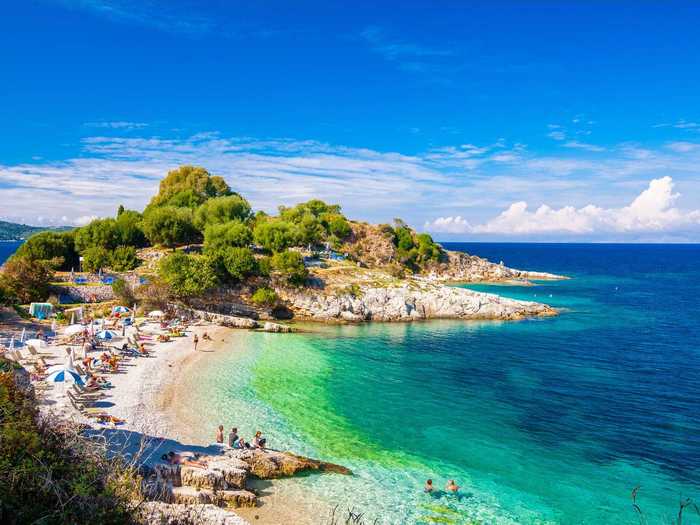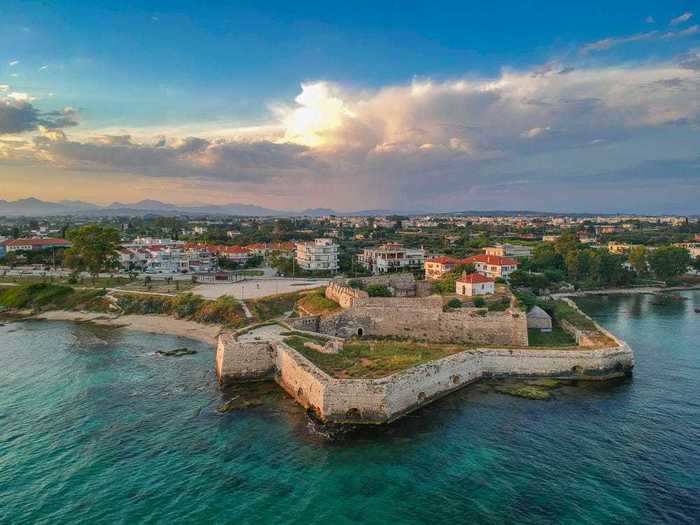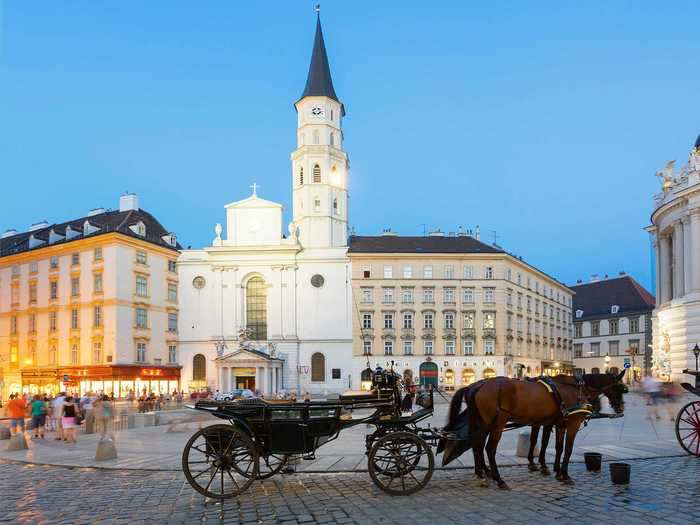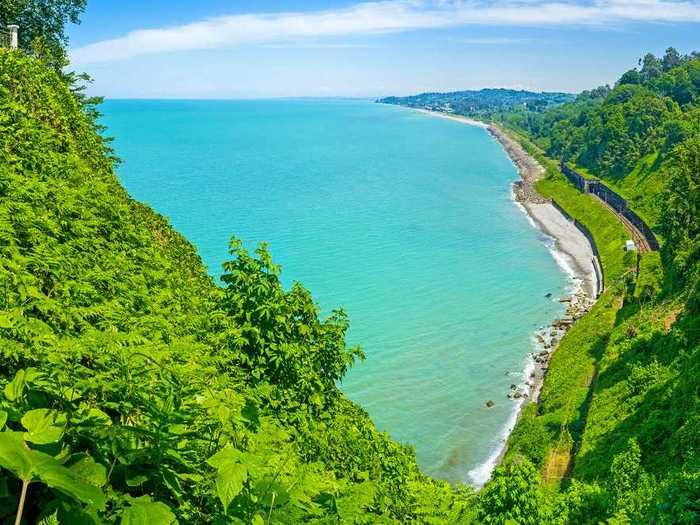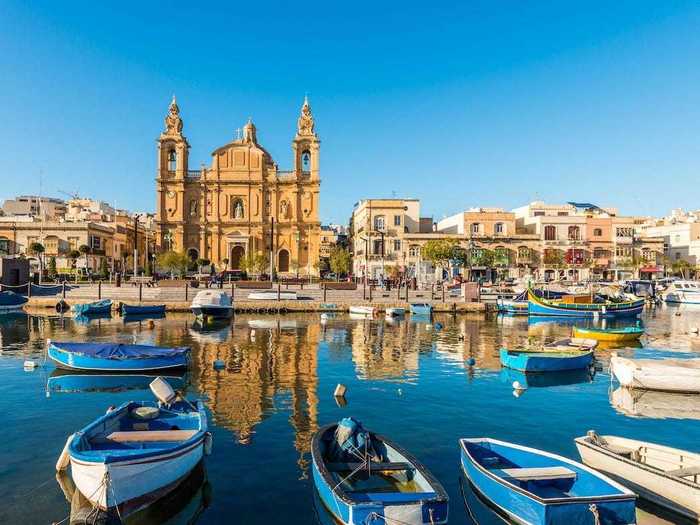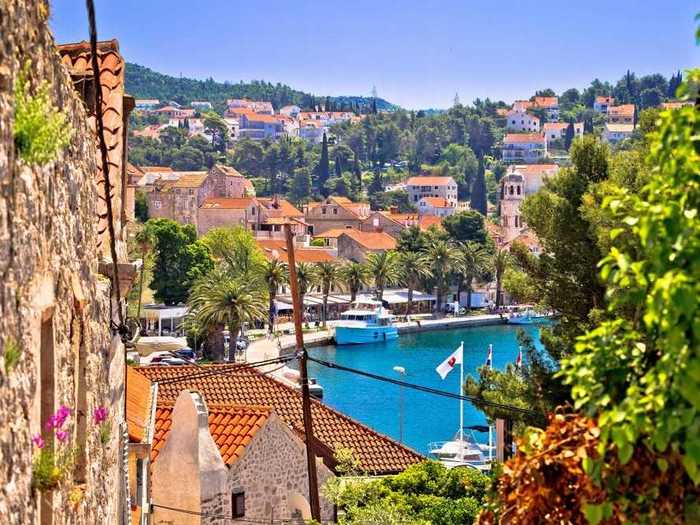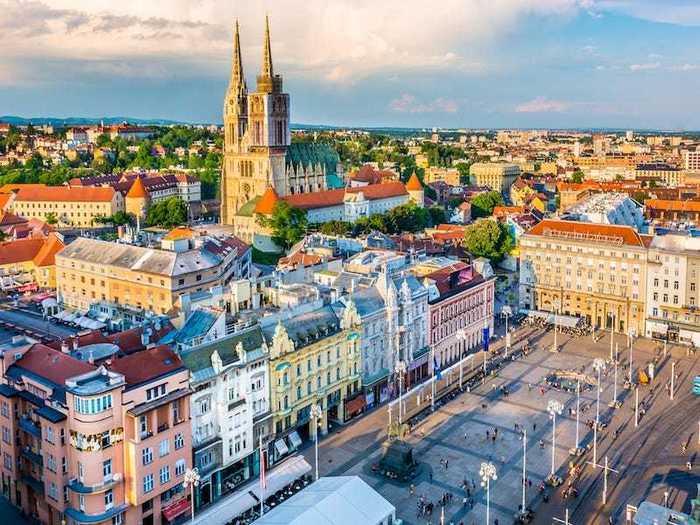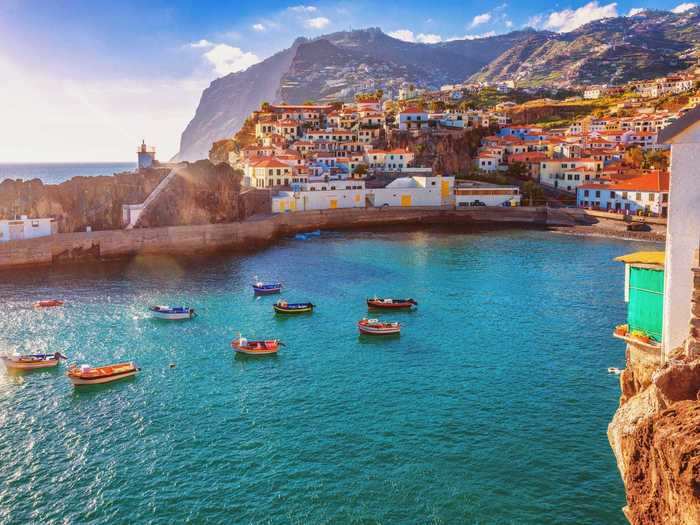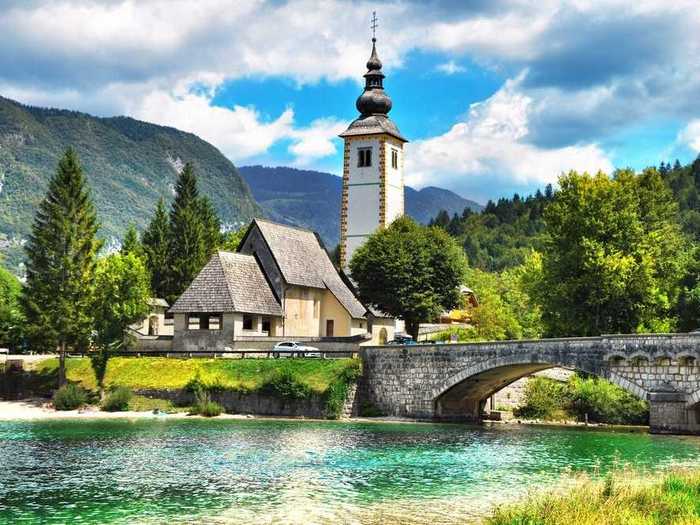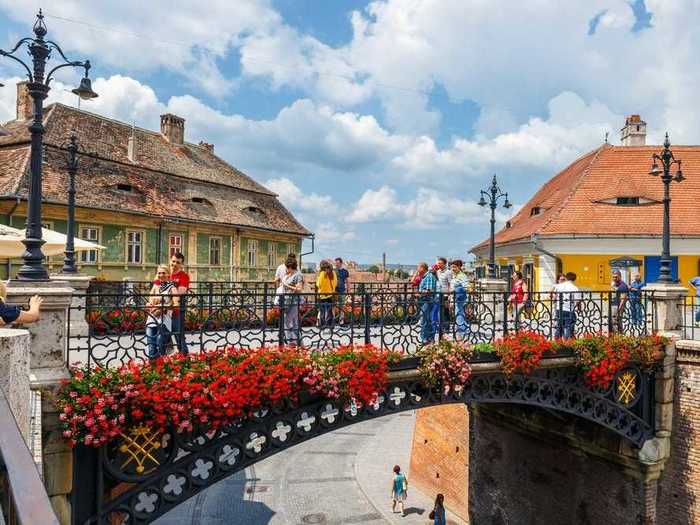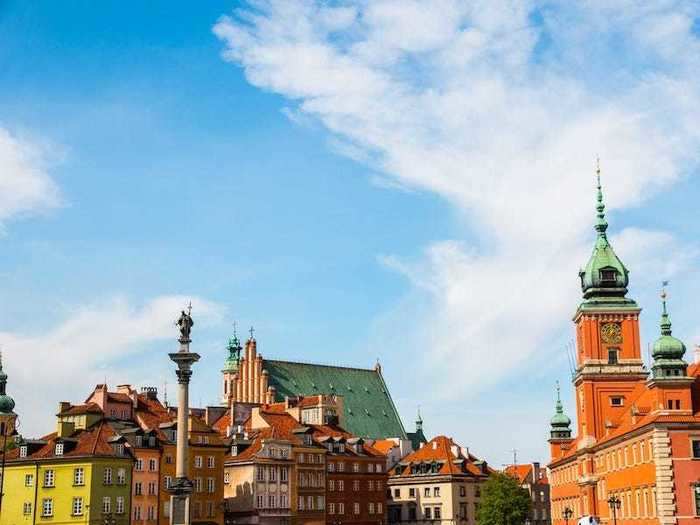Portugal's Azores are often compared to Iceland or New Zealand in terms of beauty and isolation.Westend61/Getty
- European Best Destinations (EBD), which works with local tourism offices to promote European travel, put together a list of what it deems the "safest" destinations on the continent for post-pandemic travel.
- It selected destinations with low COVID-19 infection rates and that have implemented strict protocols on hygiene and social-distancing measures.
- It also took into account how many hospital beds destinations have, choosing places that have more hospital beds per capita than other European countries.
- While many travel restrictions within Europe have been lifted, nonessential travel is still not recommended in many places, such as in the US, where the Centers for Disease Control warns against it.
As countries around the world relax their lockdowns, many tourism-reliant economies have opened, or are planning to open their doors to travelers ASAP.
European countries in particular are opening borders, creating air bridges and travel bubbles (basically agreements between countries that allow their citizens to freely travel between them) and in some cases even offering incentives such as discounted flights and hotel stays to lure in tourists. Even Italy — which is among the hardest-hit European countries — is back in business, having reopened its borders to international tourists without any quarantine rules in place in early June.
European Best Destinations (EBD), which works with local tourism offices to "promote culture and tourism in Europe," has put together a list of what it deems the "safest" destinations on the continent for post-pandemic travel.
According to EBD, it picked "some of the destinations least affected by COVID-19" that it says have seen up 600 times fewer COVID-19 cases than more hard-hit European countries, as well as those destinations that have implemented strict protocols on hygiene and social-distancing measures, and that have a higher number of hospital beds per inhabitant than other European countries.
While many travel restrictions within Europe have been lifted, nonessential travel is still not recommended in many places, such as in the US, where the Centers for Disease Control warns against it. If you do choose to travel, it's best to check the CDC's travel recommendations for each country.
Keep scrolling to see some of EBD's best European destinations to visit when it is safe to do so. And keep in mind that these restrictions and reopenings are subject to change, as countries continue to monitor the pandemic.
Ancient churches, rugged mountains, and pristine water make Corfu, Greece, one of the most famous Greek isles.
Before becoming part of Greece in 1864, Corfu was under Venetian, French, and British rule.
Shutterstock/Todoran Andrei
Greece has been widely lauded for its swift response to the coronavirus. At the time of writing, it has seen 2,997 confirmed cases of COVID-19 and 180 related deaths, according to Johns Hopkins.
Greece announced that it will welcome tourists from June 15, when international flights to Athens and Thessaloniki will be allowed. However, travelers from high-risk areas, as defined by this list from the European Union Aviation Safety Agency (EASA), will face COVID-19 testing and potential quarantine until at least July 1. The list includes the US.
Preveza, Greece, which sits between the Ambracian Gulf and the Ionian Sea, is home to a well-known yacht harbor.
Preveza is located at the mouth of the Ambracian Gulf.
Shutterstock
Once home to the likes of Mozart, Beethoven, and Freud, Vienna, Austria's capital, has an artistic and intellectual history that can still be felt today.
Vienna is famous for its coffeehouse culture.
Sylvain Sonnet/Getty
EBD says that Austria had "10 times fewer infected people than anywhere else in Europe," with 16,968 confirmed cases of COVID-19 and 672 related death, per Johns Hopkins, at the time of writing.
Austria reopened its borders to all neighboring countries but Italy on June 4, but plans to open to Italy on June 16, when it will also put an end to quarantine requirements for visitors from 20 European countries.
According to the Telegraph, Austria's foreign minister said at a news conference: "We are opening Austria's borders to all EU, EFTA (European Free Trade Association) and EEA (European Economic Area) states with four notable exceptions — those are Sweden, Great Britain, Spain, and Portugal."
Spain and Austria are expected to mutually lift restrictions to each other on July 1, which is when, according to Euronews, some non-EU countries such as Albania, Bosnia and Herzegovina, Kosovo, Montenegro, North Macedonia, and Serbia may also be allowed to enter.
Countries with worse outbreaks will continue to be restricted, and it's unclear at the time of writing when travelers from other places will be allowed.
Tbilisi, the capital of Georgia, is the perfect mix of hip and history, with winding cobblestone streets featuring medieval architecture at every turn.
Before 1936, Tbilisi was known as Tiflis.
MiGol/Shutterstock
With the Black Sea and its front, and imposing mountain peaks at its back, Batumi's stunning scenery has made it one of Georgia's most popular summer destinations.
Turkish mountains are sometimes visible from Batumi.
Shutterstock
According to EBD, Georgia has more hospital beds per inhabitant than most European countries.
Malta's capital, Valletta, was founded in the early 16th century and was called "one of the most concentrated historic areas in the world," by UNESCO.
Malta sits between Sicily and North Africa.
FredP/Shutterstock
According to Johns Hopkins, Malta has seen 630 confirmed cases of COVID-19 and nine related deaths at the time of writing.
Malta International Airport is expected to reopen on July 1, but only to travelers from Austria, Sicily, Cyprus, Switzerland, Sardegna, Iceland, Slovakia, Norway, Denmark, Hungary, Finland, Ireland, Lithuania, Israel, Latvia, Estonia, Luxembourg, and the Czech Republic. According to Malta's visitor's bureau, Malta's prime minister said that more destinations will be announced as they are cleared by health authorities.
Cavtat is Croatia's southernmost resort: Sitting on a peninsula it's sandwiched between two gorgeous harbors, with plenty of promenades and beaches.
Cavtat is Croatia's southernmost resort town.
Shutterstock
According to Johns Hopkins, Croatia has seen 2,247 confirmed cases of COVID-19, and 104 related deaths at the time of writing. Per EBD, that's "20 times fewer infected people per million inhabitants than other European countries." EBD also says that Croatia has one of the highest number of hospital beds per inhabitant in Europe.
Croatia has already reopened to tourists from EU member countries.
According to Euronews, the European Commission is pushing for non-EU countries such as Albania, Bosnia and Herzegovina, Kosovo, Montenegro, North Macedonia, and Serbia to be allowed to enter from July 1, though at the time of writing it's unclear when travelers from other places will be allowed.
Zagreb, Croatia's capital, was once a medieval fortress, but its history dates all the way back to the Roman empire, which is evident in its narrow cobblestone streets, and many ancient towers and churches.
Zagreb is Croatia's largest city.
Dreamer4787/Shutterstock
The volcanic Madeira Islands, a Portuguese archipelago, are a subtropical dream of colorful villages, lush vegetation, rugged mountains, and beautiful beaches.
The Madeira Islands consist of two inhabited islands — Madeira and Porto Santo —and two uninhabited groups of islands.
Getty/Juergen Sack
Portugal, after easing out of lockdown by reopening some shops and restaurants in mid-March, has become one of the first European countries to welcome back international visitors, according to Condé Nast Traveler. Currently, US travelers are allowed entry without quarantine requirements, according to The New York Times.
At the time of writing, Portugal has seen 34,885 confirmed cases of COVID-19, and 1,485 related deaths, per Johns Hopkins, and its visitor's bureau states that Madeira had 90 cases and no deaths to date.
Madeira is expected to reopen July 1, and offer free COVID-19 testing to arrivals.
Filled with hot springs, lush forests, and volcanic mountains, the Azores, Portugal's remote nine-island archipelago, is often compared to Iceland or New Zealand in terms of beauty and isolation.
Nine volcanic islands make up Portugal's Azores.
Shutterstock/Dov Fuchs
Medieval villages sprawled amid endless plains, rolling hills, and rugged beaches make the Alentejo in Portugal an increasingly popular spot.
The Alentejo in Portugal is well-known for its wine-making.
Shutterstock/inacio pires
"Tourists are welcome in Portugal," Portugal's foreign minister said on March 22, adding that health checks will be implemented at airports.
"Portugal has been relatively spared from the coronavirus with up to 40 times [fewer] people infected than anywhere else in Europe; some regions such as the Alentejo have even been almost 'Covid-19 free,'" says EBD.
Kotor in Montenegro is a UNESCO World Heritage Site built between the 12th and 14th centuries that's home to winding cobblestone streets, fort-like walls, and medieval monuments.
Kotor sits on the Gulf of Kotor.
Darko Vrcan/Shutterstock
Bohinj, Slovenia, is an outdoor lover's paradise, having been touted one of the best sustainable tourism destinations in Europe.
Slovenia was named the "most sustainable country on Earth" by National Geographic in 2017.
Shutterstock
Once a wealthy Germanic walled citadel, Sibiu, Romania, is still home to walls from the 12th century, and its former grandeur shines through at every turn.
Sibiu was once known as Hermannstadt.
Shutterstock
According to Johns Hopkins, Romania has seen 20,604 confirmed cases of COVID-19 and 1,339 related deaths at the time of writing.
While Romania has reopened hotels and plans to allow indoor dining by June 15, according to The Points Guy, reports suggest that the country will reopen to all visitors by July 1, though this is yet to be fully confirmed.
Warsaw, Poland's capital, has managed to perfectly blend its historical buildings with contemporary architecture, embracing its history while looking to the future.
Warsaw is Poland's largest city.
Cesare Palma/Shutterstock
According to Johns Hopkins, Poland has seen 27,160 confirmed cases of COVID-19 and 1,166 related deaths at the time of writing. EBD says that Poland, on par with Portugal and Greece, saw up to 20 times less contamination than the most affected Western European countries and that it has more hospital beds per inhabitant than the Netherlands or Switzerland.
Poland plans to reopen to international tourism beginning June 13, according to The Points Guy, which also says that travelers will have to self-isolate for 14 days, though this requirement may be lifted soon. Poland's visitor's bureau says that this reopening "may not include travel from non-EU member countries, like the US and Canada," but that more information will be available later in June.

